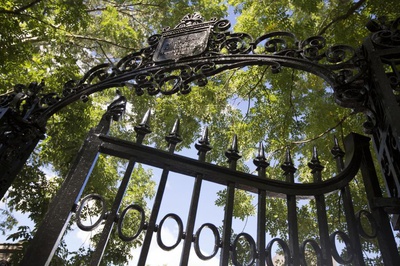
News
Harvard Researchers Develop AI-Driven Framework To Study Social Interactions, A Step Forward for Autism Research

News
Harvard Innovation Labs Announces 25 President’s Innovation Challenge Finalists

News
Graduate Student Council To Vote on Meeting Attendance Policy

News
Pop Hits and Politics: At Yardfest, Students Dance to Bedingfield and a Student Band Condemns Trump

News
Billionaire Investor Gerald Chan Under Scrutiny for Neglect of Historic Harvard Square Theater
Tradition, Technology, and Blockbuster Ballet
It’s only November, but corporate America has officially begun to look forward to the holiday season. Radio stations are playing a rotation of Christmas songs, red and green decorations have replaced the Halloween candy in the seasonal isle, and the New York City Ballet has started promoting its famous version of “The Nutcracker.” Performances won’t begin until November 25, but tickets are already on sale. This year, the New York City Ballet and Lincoln Center have coordinated to bring audiences the December 13 performance on film in movie theaters around the country, making this particular holiday tradition more accessible than ever.
Showing performance art in theaters is nothing new, but the decision to broadcast “The Nutcracker” surprised me. The film version of the corps’s performance will only air on the night of December 13 in select theaters, perhaps in order to replicate the uniqueness of each live performance or to preserve ticket sales for the rest of the show’s run. The strategy of bringing performance to a wider audience in theaters, especially with the special appeal of a one-night-only experience, has some obvious advantages. More people will see the show—not least because of the cheaper ticket prices for the theater viewing—and an otherwise fleeting live performance will be carefully shot and preserved permanently on tape. Despite these advantages, though, my initial reaction to this news was negative. Wouldn’t the performance lose something crucial if the audience wasn’t actually in front of the dancers?
When I went to see the Boston performance of “The Nutcracker” last year, I was struck most by the dancers’ almost inhumanly perfect execution. Only the sound of their shoes when the music went quiet reminded me that these were real people only a few hundred feet away from me. I can’t imagine this sensation affecting an audience watching from a movie theater, where we are trained to accept any spectacle without much amazement. In popular cinema we see cities blown up in front of our eyes, humans transformed into monsters, and people brutally killed in every possible way. My fear for ballet on the big screen is that we will forget that these are not special effects, but extraordinarily talented people performing in real time. Nothing shocks us on the big screen anymore, but watching a ballerina endlessly pirouette in front of you can provoke no other response. Experienced in person, the performance can make you physically ache and make you feel viscerally how incapable your own body is of the dancers’ precise movements.
These and many others were the anxieties that came to my mind as I imagined viewing a live experience through a screen. I worried that the live performance would be changed by the dancers’ knowledge that there would be on camera close-ups of their expressions as they danced; I even worried that this would eventually lead to the demise of the live theaters in major cities, and a completely new definition of what constitutes ballet.
But then I realized that maybe this negative perspective on change says more about myself than about the New York City Ballet’s “Nutcracker.” I must face the fact that I am a member of the traditionalist camp, always hesitant to change an art form that is already beautiful. But even I am coming to realize what nearly every artist and arts organization has already accepted: that we are left with little choice other than to take the plunge and hope that the good outweighs the bad. The New York City Ballet is by no means the first arts organization to tape the live performances for which they are renowned. The Metropolitan Opera has been broadcasting its performances since 2006. The project has been a great success, drawing in major revenue and attracting much larger audiences than would be possible for live performances alone. While there may be some drawbacks, staying relevant and incorporating every new development is more likely to create long-term success than refusing to meet the demands of a world that is coming to rely more on technology every day. So for now, I’m not about to buy tickets to a taped performance of “The Nutcracker,” but I’m sure many others will—and maybe when the theater goes quiet, they too will hear the quiet sound of tapping shoes.
—Columnist Sofie C. Brooks can be reached at sbrooks@fas.harvard.edu.
Want to keep up with breaking news? Subscribe to our email newsletter.
From Our Advertisers

Over 300+ courses at prestigious colleges and universities in the US and UK are at your disposal.

Where you should have gotten your protein since 1998.

Serve as a proctor for Harvard Summer School (HSS) students, either in the Secondary School Program (SSP), General Program (GP), or Pre-College Program.

With an increasingly competitive Law School admissions process, it's important to understand what makes an applicant stand out.

Welcome to your one-stop gifting destination for men and women—it's like your neighborhood holiday shop, but way cooler.

HUSL seeks to create and empower a community of students who are seeking pathways into the Sports Business Industry.
